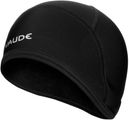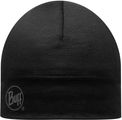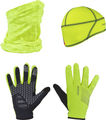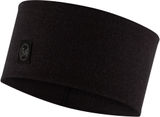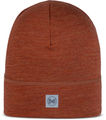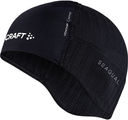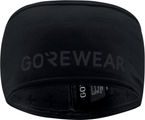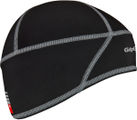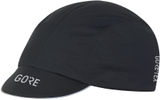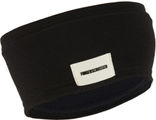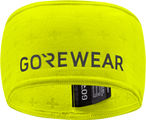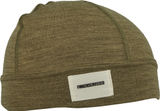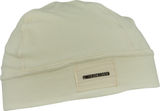Hats-caps
OUR Hats-caps RECOMMANDATIONS
Our Suggestions
Cycling caps are classic pieces of bike wear that are also worn nowadays as stylish off-bike accessories. On road bikes, cycling caps are worn underneath one’s helmet. They help to prevent sweat from running into your eyes. Its small peak protects your eyes from sun, wind and rain. For people with very short hair, bike caps also offer great protection from bug bites and sunburn. Winter hats, on the other hand, block icy wind from coming in and keep your head nice and warm. For mountain bikes, the visor on the helmet takes over some of these functions, which is why caps without peaks, tube scarves or headbands are more commonly worn here. No matter what you need, we have just the right thing to offer! Read further and discover more.
Road Cycling Caps for Road and Gravel Biking
The most common type of cycling cap is the classic road cycling cap, which is worn underneath the helmet particularly in the summer months. It is usually made of fabric blend that ensures fast moisture-wicking. The peak is often made of a sewn-on, man-made material, so it can be folded up easily and won’t be damaged in the washing machine. Cycling caps are usually offered in unisex sizes and with rubber appliqués at the back of the head, but there are different manufacturing methods that impact the fit. Individual caps are offered in women's and men's designs, or in two sizes. Classic designs such as three- and four-panel cuts feature their own distinctive fit; more modern seamless caps made from stretch fabrics, on the other hand, conform to your head’s shape perfectly. Of course, only you can be the judge when it comes to style: manufacturers such as GripGrab or ASSOS offer rather plain, monochromatic designs, while Cinelli or Endura are sometimes known for brightly-coloured and whimsical printed caps that are also popularly worn without a helmet or for other sports.
Mountain Bike Caps – What is Suitable for Off-Road?
A cap is also advisable on a mountain bike because it helps you to mitigate sweat better – and the helmet’s padding doesn’t get as saturated. On a mountain bike, however, you are more likely to wear a cap without a peak because you already have a visor on your helmet, and sometimes you need a larger field of vision than on the road. There are caps without a visor that function as a wafer-thin protective layer during the summer to combat UV radiation, as well as sturdier designs with significant warming and windstopper properties. Both designs allow you to mitigate unpleasant pressure underneath your helmet.
Winter Hats – How Do I Keep Warm?
It doesn't matter if you wear a cycling cap with or without a peak: there are always designs to meet multiple requirements for the cold season. Just click on our "thermal” filter! What all winter bike caps have in common is a longer cut – they often extend over the ears and further down the neck. Long-haired folks rejoice: a few of these caps have a slit in the back for ponytails or plaits!
You can choose between windstopper caps, lightly-insulated caps and caps for extremely low temperatures; they can be found by full-range manufacturers such as Vaude, Specialized and Shimano as well as from specialist outfitters such as GORE, 45NRTH and Patagonia. Many cyclists swear by Merino wool caps in winter, as they are able to retain warmth even when wet and have natural odour-reducing properties. Some winter cycling caps also come in neon colours that show through the openings in and around the helmet. You can find them under our "high visibility" filter. And, if you are planning an arctic expedition with your bike, we recommend a thermal balaclava that protects you from freezing wind right down to your jacket collar.
Are There Special Caps for Rainy Weather?
In fact, there are also cycling caps that are waterproof – the perfect choice if your training or travel plans don't take the weather into account. These caps feature the same cut as your other caps, but are made of multi-layered waterproof textiles similar to your rain jacket. Sometimes they are lightly lined so that they can absorb interior moisture and provide more comfort.
Wearing Tube Scarves and Headbands Under Bicycle Helmets
If you only want to protect your forehead and ears from the cold wind, a headband should suit you just fine. They are often windproof at the forehead and are pulled a little lower at the ears to provide optimal support and coverage. Some headbands have small holes around the ears so that you can hear well even in cold weather. Seamless manufacturing and stretch materials often provide comfort underneath the helmet. In addition to caps and the well-known, universal tube scarves, manufacturer BUFF also offers certain headbands with different functions.
Wearing a Cycling Cap Under a Helmet – What Should I Bear in Mind?
It is very important that the bike cap won’t become a source of discomfort when worn underneath a helmet. Wearing a cap in combination with some closures at the back of some helmets can add unwanted pressure – in this case, you can either readjust the helmet or try wearing another cap. The cap should not be too tight – if you have a large head, for example, try wearing caps with more stretch or designs with a more forgiving cut. If you ride with eyewear, make sure that the fit isn’t too tight between your glasses or goggles, the cap/peak and the helmet – and it's best if the temples of your frames extend over your cap. If you want to wear a lined cap or headband in winter, make sure when shopping for a helmet that a slightly-thicker fabric fits underneath it without squeezing your head, and that the helmet still fits and can be secured well!

